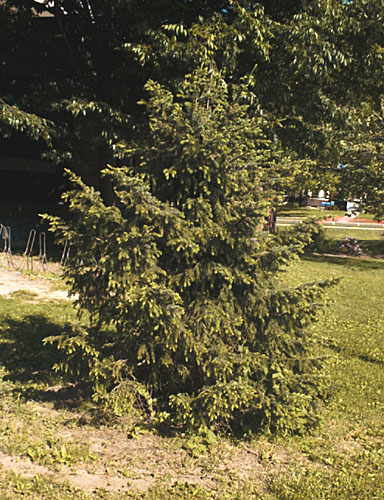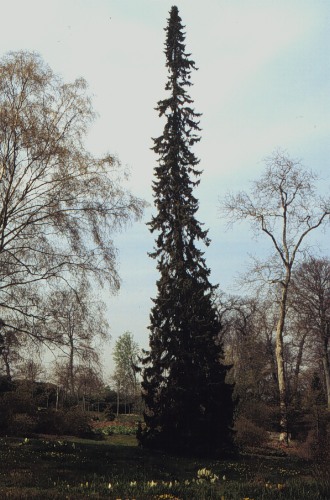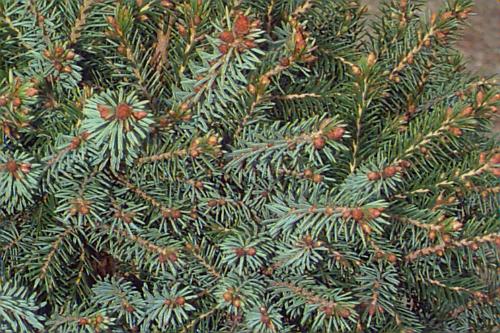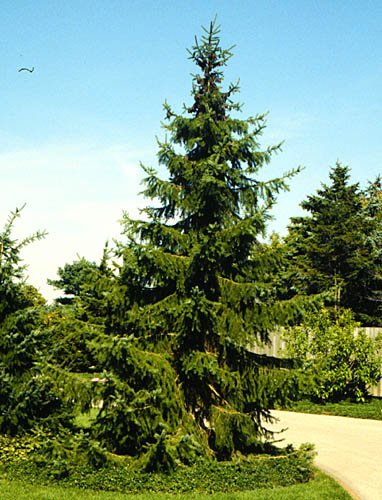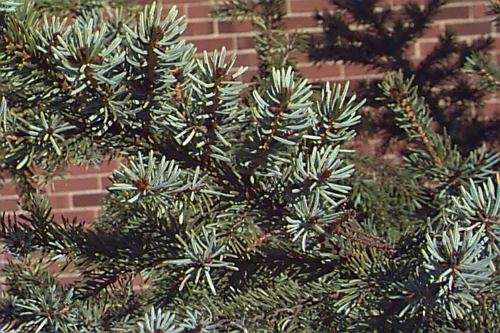Picea omorika
Serbian Spruce
Pinaceae
ExpandHabitat
- native to southeastern Europe
- zone 4
Habit and Form
- evergreen tree with pendulous branches
- narrow, conical shape
- 50' to 60' tall and 20' to 25' wide, can reach over a 100'
- slow growth rate
- medium texture
Summer Foliage
- dark green in color with no stomatal line on upperside of leaf
- needles are 0.5" to 1" long
- needles tend to point forward and overlap
- needles are pointed on young trees, mature trees tend to have a rounded needle apex
- underside of leaf is glacous with 2 stomal lines
Autumn Foliage
- no fall color, evergreen
Flowers
- monoecious
- not ornamentaly important
Fruit
- cones found at the ends of branches
- mature cones are short; 1.25" to 1.75" long by 0.5" to .75" wide
- purple color turning to a reddish brown at maturity
- cone scales have small dentate margins
Bark
- dark black-brown color
- peeling, thin scales
Culture
- best in moist, well-drained, organic soils
- pH adaptable
- best if protected from strong winter winds
- full sun
- tolerant of city pollution
Landscape Use
- specimen
- screen
- large shade tree when an evergreen is desired
Liabilities
- occasionaly problem with borers and aphids
- can not tolerant strong winter winds
ID Features
- large, narrow, evergreen tree
- small cones
- needles leave petiole on stem when pulled off
- short needles, overlapping and pointing forward
- dark green color
- slender trunk for tree size
Propagation
- by seed
- cultivars by grafting or some by cuttings
Cultivars/Varieties
'Nana' - This form assumes a dense, globular form when young. In time, it becomes a broad pyramid. The needles are densely set, deep green and have a white line underneath.
'Pendula' - Very popular as a specimen plant with upscale landscapers, this tree has drooping branches that make for a dramatic specimen. The habit is open, with deep green needles that are whitish underneath. 'Pendula Bruns' is a similar selection with an even more strongly weeping habit.
